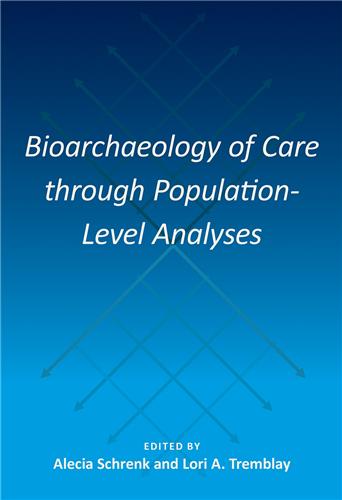Bioarchaeology of Care through Population-Level Analyses
Edited by Alecia Schrenk and Lori A. Tremblay
Hardcover: $85.00
New methods for understanding healthcare in past societies
“Provides unique and useful models that demonstrate how inferences can be made about communities of care in samples ranging in size from several dozen to several thousand. Authors weave together diverse lines of evidence—osteological, archaeological, ethnographic, clinical—in their historical and cultural contexts. Sophisticated analytical tools and theoretical frameworks position this book at the cutting edge of bioarchaeological research and illustrate the cultural relativity of care, caregiving, and healthcare in the past and present, and in Western and non-Western contexts.”—Alexis Boutin, coeditor of Remembering the Dead in the Ancient Near East: Recent Contributions from Bioarchaeology and Mortuary Archaeology
Representing current and emerging methods and theory, this volume introduces new avenues for exploring how prehistoric and historic communities provided health care for their sick, injured, and disabled members. It adjusts and expands the bioarchaeology of care framework—a way of analyzing caregiving in the past designed for individual case studies of human skeletal remains—to detect and examine care at the population level.
Covering a range of time from the Archaic period to the present, contributors discuss community settings including British hospitals and nursing homes, a shell burial mound site in Alabama, and the Mississippi State Asylum. These essays offer insights into the care given to children and those with reduced mobility, the social burden of health care, practices of euthanasia, and the relationship between care for the mentally ill and structural violence.
A necessary extension to our understanding of the complexities of caregiving in the past, Bioarchaeology of Care through Population-Level Analyses shows that it is important to recognize the impact of disease or disability on both the individuals affected and their broader communities. Contributors demonstrate that flexibility in bioarchaeological modeling and methodology can result in robust and nuanced scholarship on caregiving in the past and the societies that provided that care.
Alecia Schrenk, instructor of biological anthropology at the University of Nevada, Las Vegas, is coeditor of New Developments in the Bioarchaeology of Care: Further Case Studies and Expanded Theory. Lori A. Tremblay, assistant professor of anthropology at the State University of New York at Delhi, is coeditor of The Bioarchaeology of Structural Violence: A Theoretical Framework for Industrial Era Inequality.
A volume in the series Bioarchaeological Interpretations of the Human Past: Local, Regional, and Global Perspectives, edited by Clark Spencer Larsen
Contributors: Petra Banks | Anna-Marie C. Casserly | Briana R. Moore | Anna Osterholtz | Bennjamin J. Penny-Mason | Charlotte A. Roberts | Alecia Schrenk | Diana S. Simpson | Lori A. Tremblay
- Sample Chapter(s):
- Excerpt
- Table of Contents
There are currently no reviews available












